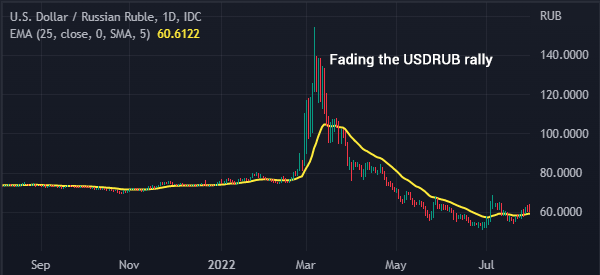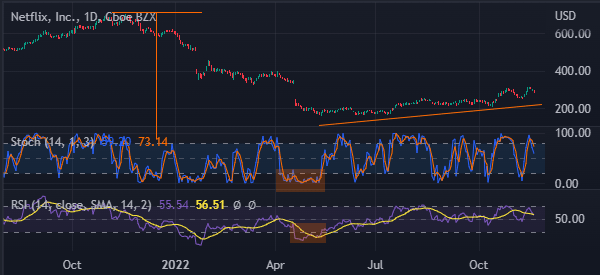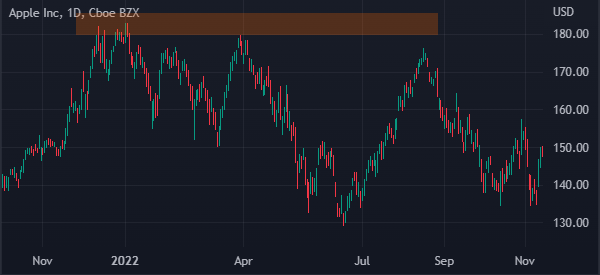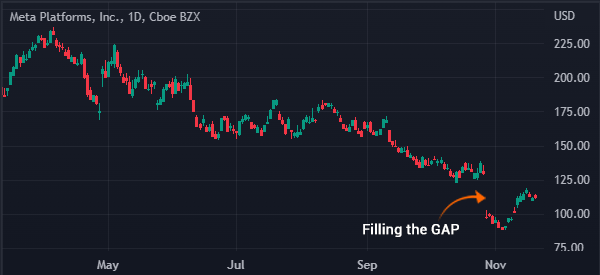Trend following is one of the most popular day trading strategies in the world. It involves buying and holding an asset whose price is rising and short-selling an asset whose price is retreating.
The strategy is often emphasised by statements like “the trend is your friend” and “don’t catch a falling knife”. The latter statement means that you should not attempt to buy an asset that is crashing.
However, some strategies claim the opposite, such as the one we will explore right now: fading. In this article, we will look at the concept of fading a trend and how to use it well.
Table of Contents
What is fading trading?
The fading strategy is one that is the exact opposite of trend-following. It is a contrarian strategy where traders seek to buy an asset whose price is falling and short one whose price is rising.
For example, if a stock rises from $10 to $15 within a short period, the fading strategy calls for placing a short trade with expectations that it will start to pull back.
In most cases, traders who apply the trend following strategy are the same ones who attempt to fade them. Their goal is to make money during an existing trend and when it starts to reverse.
Related » How to spot a trend early
Fading strategy assumptions
The strategy has three important assumptions. First, fading traders assume that a price has moved to an overbought or oversold level.
Traders use technical tools known as oscillators to identify overbought and oversold levels. The most popular oscillators to find these levels are the Stochastic Oscillator and the Relative Strength Index (RSI).
Second, they assume that existing buyers of an asset will start taking profit after an asset rises sharply in a short period. This period when buyers start exiting their positions is known as distribution. It is based on the theory that buyers don’t hold their trades forever.
Related » Understand Stock Market Cycles
Third, there is the assumption that existing holders of an asset are at risk. As such, if this happens, they will start exiting their trades.
How fading trading works
As mentioned above, the fading strategy is a contrarian way of trading, where a trader attempts to go against a trend. Therefore, for it to work, there needs to be an existing trend. After identifying an existing trend, a trader works using the strategies explained below to take the opposite route.
As we will note, fading is an extremely risky trading strategy since a trend can go on for a long time. Also, it is possible to be caught in a squeeze when you attempt to go against the trend.
There are other ways of using the fading strategy. For example, assume a situation where an asset rises sharply after the company publishes its financial results.
In most cases, the rally will start in the extended hours or premarket. As the stock pops, you assume that the gains will be limited. In this case, you could place a contrarian trade in the opposite direction.
Fading trading strategies and examples
There are several fading trading strategies that you can use profitably. Let us look at some of them.
Fading the news
A common fading strategy that you can use is known as fading the news. This is a strategy where a stock or currency pair jumps or falls sharply after the release of an important news. Examples of popular news that push stocks sharply higher or lower are earnings, mergers and acquisitions, investigations, new product launch, and geopolitics.
In most cases, assets tend to overreact when a major event happens and then the prices tends to stabilize after a short period.
A good example of this is what happens after Russia invaded Ukraine. At the time, the Russian ruble collapsed after western countries imposed sanctions. As shown below, the USD/RUB then made a sharp decline.
Related » Our full guide to forex trading

Using oscillators in fading strategy
The other popular fading trading strategy is to use oscillators. Oscillators are technical indicators that are used to identify overbought and oversold levels. Some of the most popular oscillators in trading are the Stochastic Oscillator, Relative Strength Index (RSI), Money Flow Index (MFI), and the MACD.
An asset is said to be extremely overbought when the indicator moves above a certain threshold such as 70 in a RSI. It is said to be extremely oversold when the indicator moves below a certain level. A good example is in the Netflix shares below.
As shown, the stock was down by more than 76% from its highest point. It got oversold, as shown by the Stochastic Oscillator and the Relative Strength Index (RSI). As such, fade traders took the contrarian route and bought the stock.

Fading strategy using chart patterns
Another way to trade the fading strategy is using chart patterns. There are several patterns that can help you with this. For example, if a rallying trade forms a double-top pattern, there is a high possibility that it will start to retreat in the near term.
Other popular chart patterns that will help you trade the fading strategy are wedges, head and shoulders, and triple-top among others. A good example of this is shown in the Apple stock below.

Fading the gap
Another popular fading strategy is where you fade the gap. This is a trading strategy where you attempt to go the opposite direction of the gap. Gaps are more common with stocks since they close every weekday.
Therefore, if there is a down gap, a trader can decide to buy and vice versa. The theory is that the asset probably overreacted and that it will start to rebalance soon. A good example of this is shown below.

Summary
In this article, we have looked at the concept of fading strategy. We explained what the fading approach is and how it works. Also, we noted some of the most popular trading strategies to use when applying the strategy.
As you will find, going against the trend can be a highly risky approach, which means that you should apply a stop-loss for all your trades.
External useful resources
- Does the Fading Trading Strategy suit me? – Currency.com





